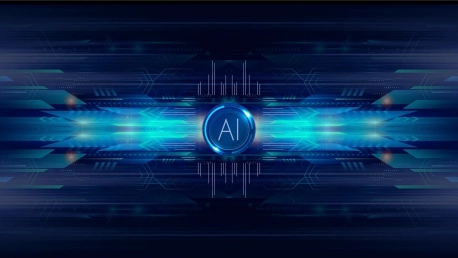Advancements in Generative AI (GenAI) stand at the forefront of a workplace revolution, fundamentally redefining industry operations and job roles. This transformative technology enhances productivity, fosters employee engagement, and raises job satisfaction, signaling a new era of human-computer collaboration. As organizations grapple with the integration of GenAI, it becomes imperative to scrutinize its profound impact on the workforce and operational dynamics.
Unlocking New Levels of Labor Productivity
GenAI heralds a significant uptick in labor productivity, potentially driving annual increases worth noting over the next two decades. By offloading repetitive and monotonous tasks to intelligent algorithms, employees are afforded the bandwidth to pivot towards more critical, strategic endeavors. In doing so, GenAI not only accelerates task completion rates but also fosters an environment where human intellect and creativity are better utilized. The liberated workforce can now engage in complex problem-solving and innovation, enhancing both business outcomes and personal fulfillment.The automation capabilities of GenAI extend far beyond simple task execution. They are evolving to undertake sophisticated functions, achieving milestones in efficiency and accuracy. As a result, entire workflows are streamlined, data is processed with unprecedented speed, and decision-making becomes informed by a wealth of analyzed information. This elevation of operational aptitude across the board ensures that businesses stay competitive while simultaneously elevating the human experience at work.
From Coding to Customer Service: GenAI’s Industry Reach
The infiltration of GenAI into the technology sector is vividly illustrated by the widespread use of coding assistants, which have become indispensable assets. These tools facilitate rapid development cycles, catch errors in real-time, and enhance the overall quality of software products. Moreover, GenAI’s influence extends across the spectrum, revolutionizing sales with predictive modeling, enriching marketing through targeted content creation, and reshaping customer operations via intelligent chatbots that provide 24/7 service.Indeed, the sphere of GenAI’s impact is vast. It has begun to converge on diverse areas such as finance for risk assessment and healthcare for diagnostic aid. This cross-industry penetration attests to its adaptability and potential to optimize a myriad of processes. As GenAI continues to evolve, it promises to unlock new frontiers of efficiency and foster breakthroughs in areas previously limited by the scope of human capacity and traditional machinery.
Workforce Perspectives on GenAI Integration
Surveys highlight a growing acceptance and enthusiasm for GenAI among professionals. It’s a sentiment echoed by those eager to harness GenAI to expand their creative and professional potential. Many anticipate leveraging these tools extensively, with a significant portion already intertwining GenAI into their daily workflows. The optimism is grounded in a belief that GenAI will not only alleviate workload pressures but also unlock novel pathways for job enrichment.This embracement of GenAI is further cultivated by its accessibility. No longer the exclusive forte of tech aficionados, GenAI applications are engineered for user-friendliness, empowering a broad spectrum of employees to capitalize on its benefits. As GenAI solutions become more intuitive, they break down barriers to entry, democratizing access to advanced technology and fostering a culture of innovation within the workplace.
Enhancing Job Satisfaction and Combatting Bias
The integration of GenAI in workplaces is not without controversy, especially concerning job displacement and bias. Yet, the prevailing view among professionals is one of GenAI as a collaborator rather than a competitor. Over half report GenAI-driven enhancements in job satisfaction, citing relief from tedium and opportunities for engaging in more meaningful work. The narrative that unfolds is one where AI supports growth and versatility rather than threatens job security.Nevertheless, vigilance against ingrained biases and potential job market disruptions remains crucial. It’s about striking a balance wherein GenAI serves to uplift rather than to marginalize. Tackling such issues head-on, through transparent practices and ethical AI frameworks, is paramount for cultivating a workplace where GenAI is associated not with apprehension but with advancement and opportunity.
Strategies for Successful GenAI Adoption
For GenAI to profoundly benefit an organization, strategic adoption is key. Employee engagement is paramount during the rollout, as is the meticulous identification of impactful use cases. The successful deployment of GenAI tools depends on their relevance and effectiveness, which can only be ensured through judicious selection and rigorous testing. Providing comprehensive training and establishing clear KPIs forms the bedrock for measuring and realizing the technology’s benefits.To this end, organizations are encouraged to craft an adoption infrastructure that supports continuous learning and feedback. Involving employees in the process couples the integration with a sense of ownership and paves the way for GenAI to become a catalyst for innovation. When such practices are in place, GenAI not only achieves its intended efficiencies but also engenders a dynamic and motivated workforce.
Bridging Human Ambition with AI Innovation
Generative AI (GenAI) is leading a significant shift in the workplace, transforming the way industries operate and redefining roles within them. This powerful technology not only boosts efficiency but also promotes a more engaged and satisfied workforce. With GenAI, the paradigm of work is evolving, ushering in an era where collaboration between humans and computers is more integrated than ever. As companies adopt GenAI, it’s crucial to consider its vast implications for employees and the structure of business activities. This technological integration isn’t just a change; it’s the beginning of a symbiotic relationship that’s altering the professional landscape, promising enhanced creativity and innovation in various sectors. As we navigate this transition, understanding GenAI’s influence on jobs and operational procedures is critical for the future of work.









